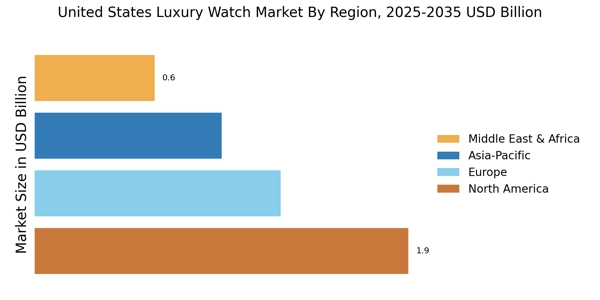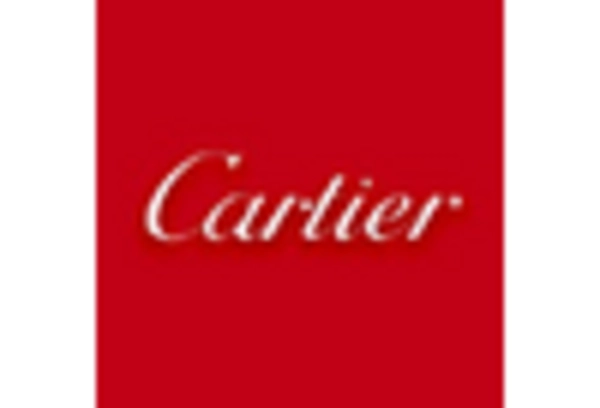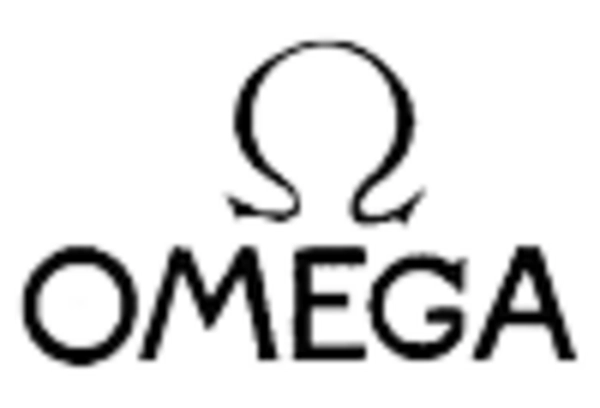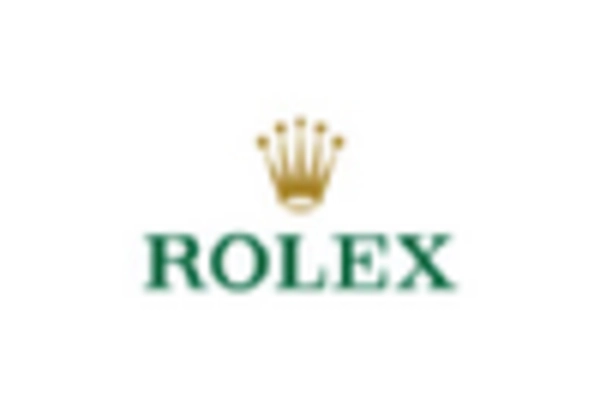The United States Luxury Watch Market is characterized by a dynamic competitive landscape, driven by a blend of innovation, brand heritage, and evolving consumer preferences. Key players such as Rolex (CH), Omega (CH), and Patek Philippe (CH) are at the forefront, each adopting distinct strategies to maintain their market positions. Rolex (CH) continues to emphasize its legacy of craftsmanship and exclusivity, while Omega (CH) focuses on technological advancements and partnerships, particularly in the realm of space exploration. Patek Philippe (CH), renowned for its intricate designs, leverages its heritage to appeal to affluent collectors, thereby shaping a competitive environment that values both tradition and modernity.
In terms of business tactics, companies are increasingly localizing manufacturing and optimizing supply chains to enhance efficiency and responsiveness to market demands. The competitive structure of the luxury watch market appears moderately fragmented, with several key players exerting substantial influence. This fragmentation allows for niche brands to thrive alongside established giants, fostering a diverse marketplace that caters to varying consumer tastes and preferences.
In August 2025, Rolex (CH) announced the opening of a new manufacturing facility in the United States, aimed at increasing production capacity and reducing lead times for its popular models. This strategic move not only enhances Rolex's operational efficiency but also signifies a commitment to the North American market, potentially attracting a new demographic of luxury consumers. The establishment of local production capabilities may also serve to mitigate supply chain disruptions, a concern that has become increasingly relevant in recent years.
In September 2025, Omega (CH) unveiled a limited-edition watch in collaboration with a prominent environmental organization, emphasizing sustainability in its production processes. This initiative aligns with the growing consumer demand for eco-friendly products and positions Omega as a forward-thinking brand that prioritizes corporate social responsibility. Such collaborations may enhance brand loyalty among environmentally conscious consumers, thereby strengthening Omega's market presence.
In October 2025, Patek Philippe (CH) launched a digital platform aimed at enhancing customer engagement and providing personalized services. This digital transformation reflects a broader trend within the luxury sector, where brands are increasingly leveraging technology to create unique customer experiences. By integrating digital solutions, Patek Philippe not only modernizes its approach but also appeals to a younger, tech-savvy audience, potentially expanding its customer base.
As of October 2025, the luxury watch market is witnessing significant trends such as digitalization, sustainability, and the integration of artificial intelligence. Strategic alliances among brands and technology firms are shaping the competitive landscape, fostering innovation and enhancing customer experiences. Moving forward, competitive differentiation is likely to evolve, with a pronounced shift from price-based competition to a focus on innovation, technological advancements, and supply chain reliability. This evolution underscores the importance of adaptability in a rapidly changing market.


















Leave a Comment